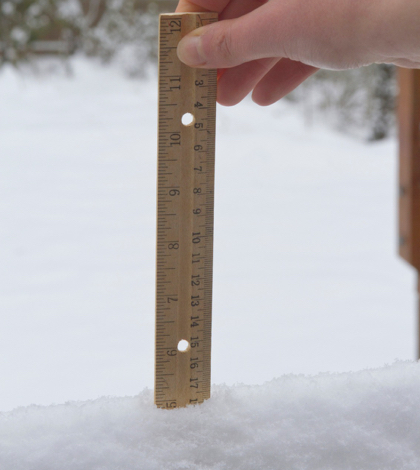A quick view of the snow-covered Sierra mountains tells only part of the story. Though significantly better than this time last year – when only small patches of snow dotted the mountains – Thursday’s first manual snow survey of Water Year (WY) 2018-19 by the California Department of Water Resources (DWR) recorded 25.5 inches of snow depth and a snow water equivalent (SWE) of 9 inches. The survey, conducted at Phillips Station in the Sierra Nevada, reflected 80 percent of average despite several early winter storms.
Automated snow sensors for the three California ranges report the following”
- Northern Sierra/Trinity (32 automated stations reporting)
- 24 percent of the April 1 average/62 percent of normal for the January readings
- 9 inches of the average snow water equivalent
- Central Sierra (43 automated stations reporting)
- 26 percent of the April 1 average/68 percent of normal for the January readings
- 9 inches of the average snow water equivalent
- Southern Sierra (28 automated stations reporting)
- 24 percent of the April 1 average/70 percent of normal for the January readings
- 1 inches of the average snow water equivalent
For California, overall, the automated sensor totals combined reflected:
- 103 automated stations reporting
- 25 percent of the April 1 average/67 percent of normal for the January readings
- 1 inches of the average snow water equivalent
“The last few years have shown how variable California’s climate truly is and what a profound impact climate change has on our water resources,” said DWR Director Karla Nemeth. “California’s significant weather variability means we can go from historic drought to record rainfall, with nothing in between. Climate change will continue to exacerbate the extremes, creating additional challenges for maintaining water supply reliability and the need for innovative solutions.”
On average, California’s snowpack provides about 30 percent of the state’s water needs as it melts in the spring and early summer. The greater the snow water equivalent content, the greater the likelihood California’s reservoirs will receive ample runoff as the snowpack melts in order to meet the state’s water demand in the summer and fall.
“About two-thirds of California’s annual rainfall occurs December through March. Total precipitation so far this water year, which began October 1, has been below average,” said DWR State Climatologist Dr. Michael Anderson. “We still have three wet season months ahead of us, so there’s time for the snowpack to build and improve before it begins to melt, which usually starts happening around April 1.”
Climate change impacts are now a force with which water managers and climatologist must contend. It has shifted the balance of rain and snow, with rain falling at higher elevations than in the past. DWR has conducted manual snow surveys at Phillips Station since 1964, recording both depth and snow water equivalent. DWR’s manual snow surveys, combined with the electronic snow sensors and emerging technology, successfully enable runoff forecasts and better water resource management.
 California Water News Daily Your Source For Water News in California
California Water News Daily Your Source For Water News in California


